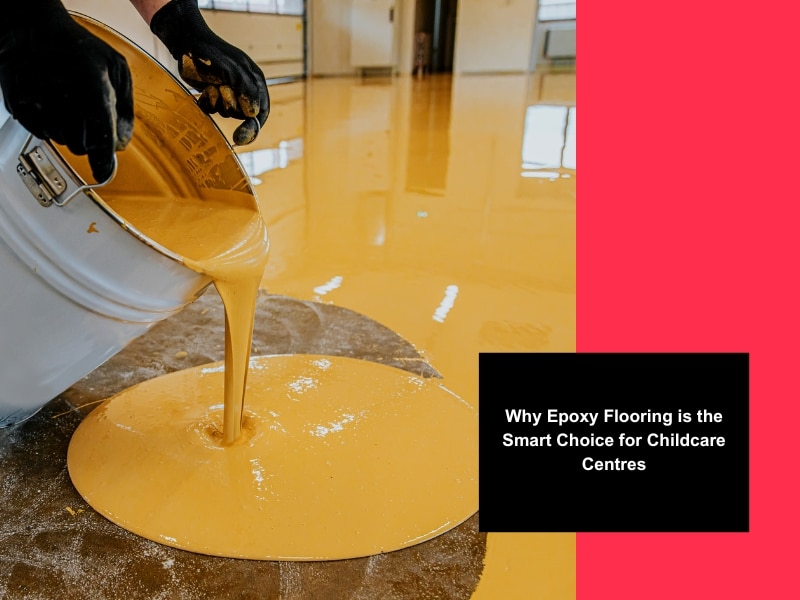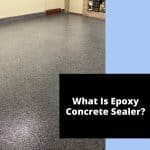An early years environment needs flooring that keeps tiny feet safe, clean and engaging while supporting staff with easy maintenance. Child-friendly flooring plays a vital role in safety, hygiene, and durability, and it can also spark imagination through its colour and texture. When assessing options—especially epoxy—it’s crucial to consider slip resistance, seamless surfaces, low-toxicity materials, quick installation and lively design. This guide outlines the daily challenges centres face, how thoughtful flooring choices can solve those issues, and why epoxy often delivers superior performance, all while enhancing both safety and play.
What flooring challenges do childcare centres face daily?
An effective flooring strategy starts with understanding the daily issues centres encounter. Here are the key challenges centres face each day:
- Moisture and slip hazards: Centre floors often become slick from spilled drinks or wet wipes, creating a constant fall risk for children and educators during transitions.
- Hidden dirt and germs: Grout lines and seams allow food particles and bacteria to build up, causing ongoing cleaning frustrations and concerns about hygiene.
- Wear from daily use: Prams, rolling toys and energetic play scratch and dent timber or vinyl floors, leading to more frequent replacements and added cost.
These problems highlight the need for a more resilient, clean-friendly surface that stays safe and presentable under constant use.
How can child-friendly flooring improve safety in early learning spaces?
An effective safety-focused flooring solution goes beyond just grip—it must be reliable day in and day out. Here are the advantages of well-designed floor surfaces:
- Slip-resistant texture: Incorporating grip additives keeps surfaces firm even when wet from spills, preventing children from slipping during activity transitions or messy play.
- Seamless transitions: Flooring that lacks joins or edges stops vinyl or tiles from lifting. These gaps can quickly become trip hazards and can cause real concern in busy areas.
- Long-term surface integrity: Thin or poor-quality floors lose traction over time. A robust epoxy coating resists abrasion, ensuring lasting safety and reducing maintenance interruptions.
Issues arise when floor materials degrade quickly, reducing safety. A resilient, slip-safe flooring solution keeps children steady from day one. To explore safe flooring solutions for children, review high-traction and seamless surface options that align with your centre’s daily use.
Why is hygiene so critical when choosing child-friendly flooring?
Keeping a childcare environment adequately clean isn’t optional—it’s regulated and essential. Here are hygiene benefits centres should prioritise:
- Sealed, non-porous coating: Unlike wood or vinyl, which absorb spills, a fully sealed surface prevents stains and odours, making cleaning just a quick wipe or mop.
- No grout or joints: Seamless epoxy floors eliminate cracks or seams, eradicating hiding spots where germs cling, especially crucial during sickness outbreaks or food time.
- Chemical resistance: Epoxy withstands bleach and powerful disinfectants, saving you from premature floor wear when sanitising areas for allergens or illness control.
This clean design eliminates the worry over hidden grime, letting staff dedicate more time to children’s learning rather than battling dirt.
Flooring Type | Surface Gaps | Cleaning Ease | Germ Hiding Risk |
Vinyl/Tile | ✗ | Moderate | High |
Timber | ✗ | Low | Very High |
Epoxy | ✓ | High | Low |
What makes epoxy ideal for high-traffic childcare environments?
Daily wear can devastate ordinary flooring, but epoxy thrives under relentless use. Here are reasons epoxy excels under pressure:
- Outstanding abrasion resistance: From toys dropped to furniture wheels, epoxy resists wear and tear, keeping surfaces intact day after day.
- Chemical durability: Spills from snacks or cleaning solutions won’t degrade the surface; it’s built to handle daily sanitisation without dulling or peeling.
- Long-lasting value: Fewer replacements mean more savings in the long term—a durable surface keeps budgets on track.
When vinyl or timber shows wear quickly, centres face repeated repair hassles. Epoxy removes that burden with a dependable, enduring surface. If you’re exploring picking the best child-focused floors, compare how materials stand up to daily use and harsh cleaners.
How can design-focused flooring support learning and play?
Children thrive when spaces are both safe and stimulating. Design-focused flooring can enhance development and comfort. Here are design benefits driven by intentional flooring choices:
- Playful colour options: Bright, inviting colours stimulate curiosity and create a lively atmosphere that encourages engagement and enthusiasm.
- Defined learning zones: Colour-coded areas—like reading nooks or group play zones—help children understand routines and spatial boundaries.
- Customised aesthetics: Flooring can incorporate a centre’s logo or colours, reinforcing brand identity while creating a consistent, professional atmosphere.

These design features support creativity, help children orient themselves, and blend form with function within the learning space. If you’re comparing epoxy to other kid-safe floors, evaluate how flexibility in layout and colour supports educational goals.
What installation options cause minimal disruption for centres?
Centres can’t afford long closures—installation speed and cleanliness are essential. Here is what makes epoxy installation centre-friendly:
- Quick weekend or holiday install: With fast cure times, epoxy can be ready within 24–48 hours—rooms reopen promptly after short closure windows.
- Direct coating on existing floors: No need for demolition—existing vinyl or concrete can be coated directly, allowing straightforward and speedy setups.
- Clean, low‑odour application: Installation is tidy and quiet, letting adjacent rooms remain operational. It’s a smooth process that avoids major disruption.
These benefits make it possible to enhance facilities over routine breaks, ensuring children return to renewed spaces without schedule clashes. If you’re weighing installation options, consider the benefits of choosing non-slip surfaces in children’s facilities that support safety and schedule continuity.
How does epoxy support sustainability and wellbeing?
Flooring affects more than function—it contributes to both environmental and personal wellbeing. Here are the long-term benefits epoxy provides:
- Durable lifecycle: Lasting surfaces reduce the need for replacements, which cuts material waste and costs over time.
- Low VOC materials: Many epoxy products are low in volatile organic compounds, supporting healthier indoor air for children and staff.
- Visual and sensory appeal: Clean, colourful, and smooth surfaces help create an inviting atmosphere that elevates daily learning.
These characteristics support your centre’s environmental goals while delivering a safer and more joyful space for kids to grow.
Final thoughts on selecting child-friendly flooring for childcare centres
Flooring plays a critical role in supporting safety, hygiene, durability, creativity and operational efficiency in childcare centres. Centres benefit most from options that are slip-resistant and seamless to minimise fall risks; non-porous and easy to clean for health; durable and chemical-resistant for everyday use; design-flexible to enrich learning spaces; and quick to install with minimal disruption—plus sustainable to reduce waste. For a closer look at what’s possible in your space, take time to discover child-safe epoxy with Ultimate Epoxy Floors and choose a surface that balances care, creativity, and long-term value.







